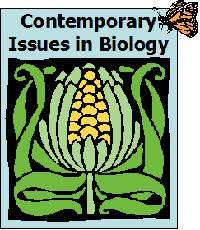
Week 6, Chapter 13 -- Digging Deeper
Course home | Weekly schedule | Announcements | Instructor Info | Desire2Learn | MasteringBiology® | Honor Code | FAQs | HELP!
 |
Week 6, Chapter 13 -- Digging DeeperCourse home | Weekly schedule | Announcements | Instructor Info | Desire2Learn | MasteringBiology® | Honor Code | FAQs | HELP! |
Instructions:
Part 1:
Suppose you are a biologist working for a pharmaceutical company. Your boss has asked you to find plants that might be useful for medical research. You know that indigenous people can be a good source of information about medicinal plants, so you selected an area to visit, met with knowledgeable local people, and then selected four plants that seemed most promising. Now you need to write a report to your boss, explaining the following:
Your assignment should be at least 450 words long; you can see a sample assignment here.
The Internet contains abundant resources related to this topic -- you might try searching for the terms "ethnobotany" or "Mark Plotkin." To get you started, here are some sites that might be helpful:
Remember, cutting and pasting from another website, without quotes or citation, is PLAGIARISM -- so is using a cut-and-pasted passage and just changing a few words. Plagiarism is a serious form of academic misconduct. If you have any questions about whether your work constitutes plagiarism, please visit the resources at week 1's plagiarism assignment, or ask your instructor.
[Note: this assignment was adapted from the following website: http://www.actionbioscience.org/biodiversity/plotkin.html]
Part 2:
Use D2L's spell checker (or the one on your word processor software, which will give you a word count as well). Proofread it yourself too, because spell checkers don't catch everything. When you are satisfied, post your completed assignment in the Digging Deeper forum for this week at the D2L discussion board.
Part 3:
Respond to the Digging Deeper posts of at least two other students. (If you are the first or second person to post, you will have to check back later to complete this part of the assignment).
After you have posted your assignment AND responded to two other students, go to Desire2Learn and complete the Gradebook Declaration for this week's Digging Deeper assignment. (Your Gradebook Declaration is subject to the Honor Code.)
Here is the text of the Desire2Learn Gradebook Declaration: (8 points) I have posted my spell-checked, proofread Digging Deeper assignment
at D2L. My assignment contains all the components listed in the assignment
instructions. |